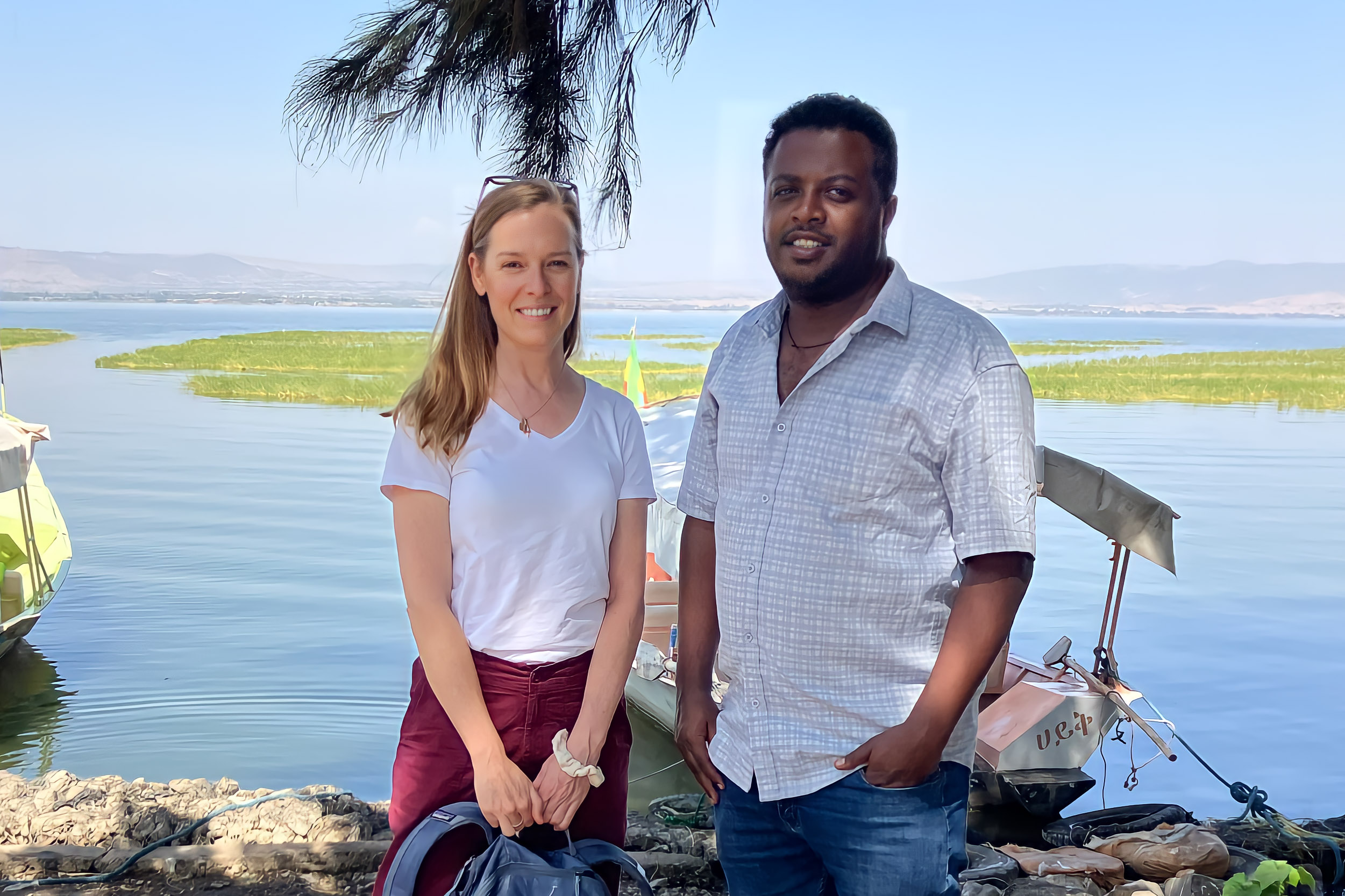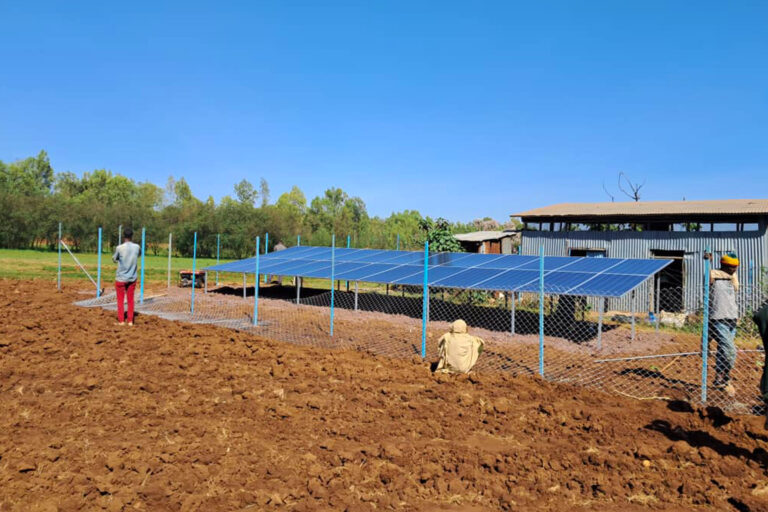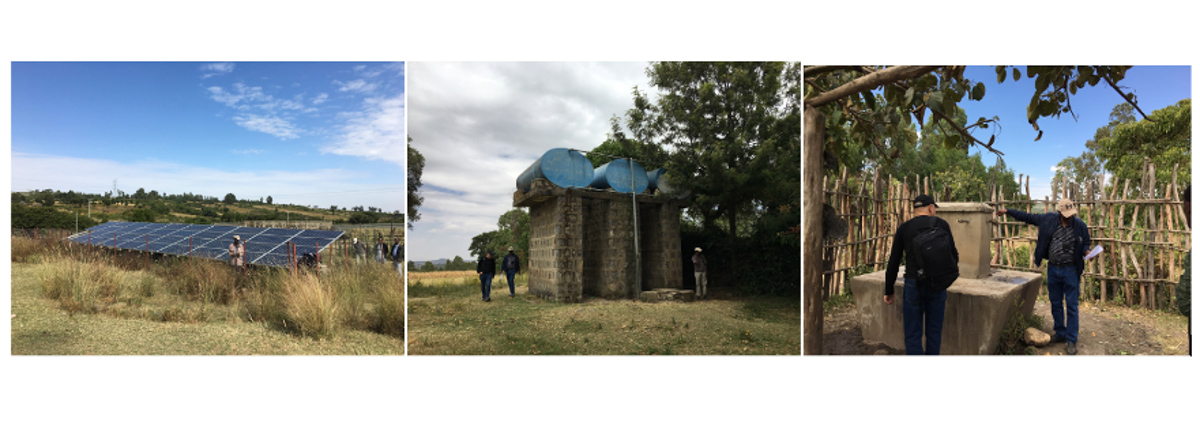
The Climate Q&A… with Jennifer Holthaus and Gedion Hailemichael
Jennifer Holthaus, Winrock’s associate director of clean energy, based in California, and Gedion Hailemichael, based in Ethiopia, work together to implement Winrock’s Solarizing Community Water project, funded by the Conrad N. Hilton Foundation. Jennifer has more than 20 years of experience working with nongovernmental organizations, government, private sector and rural community partners to design and manage projects and grantmaking initiatives in the areas of climate change, renewable energy, biodiversity conservation and agriculture. Gedion, project coordinator of the Solarizing Community Water project in Ethiopia, has 20 years of experience in different industries following his BSC degree in electrical engineering. He joined Winrock after seven years at GIZ, where he led work on renewable energy solutions for rural communities and in humanitarian settings. He has expertise in mobilizing communities and the private sector to design and construct solar photovoltaic and hydropower technologies for electricity generation and water access.
What are some of the challenges people face in accessing potable water in rural parts of Ethiopia?
Ethiopia is the second most populous country in sub-Saharan Africa. According to the World Health Organization, 43% of the population does not have access to an improved water source. Ethiopia is in the Horn of Africa region, which is experiencing increasingly unpredictable variations in temperature and rainfall patterns due to climate change. The protracted drought during 2020-2023 has led to a water crisis, with more than 8.5 million people facing dire water shortages across the region. (water-crisis-horn-africa-2022.pdf (unicef.org))
Many rural communities in Ethiopia do not have access to electricity, so the federal and regional governments provide grants for construction of diesel-powered pump systems in many of these communities. The systems typically use a borehole to access groundwater, or they may pump from a spring. The pumps feed community taps where people line up to pay a tariff for the water, typically $0.04 to $0.06 per 20-liter container. However, as these diesel pumps have aged, the maintenance costs (on top of the diesel fuel costs) become too large to be covered by the tariff, and systems suffer from increasingly frequent breakdowns. When this happens, community members – most often women and school-age girls – must go back to walking to the nearest river to collect water, which can take up to two hours each way. Untreated water sources also cause health issues; 17% of childhood deaths in Ethiopia are associated with diarrhea attributed to poor water, sanitation and hygiene. It is critical for communities to be able to sustainably access groundwater, which is more resilient to drought conditions.
You recently completed a White Paper summarizing your first year of work on this project. The paper highlights that solar-powered water pumps have become much more affordable than they were a mere 10 years ago and are better for the environment. Yet many communities around the world still use expensive, polluting diesel-powered pumps to supply water – why is that?
Development practitioners globally agree that solar pumps are the technology of choice for potable water supply in off-grid communities. Solar water pumps are nearly universal at refugee camps, where donors no longer fund diesel pumps because of the prohibitive long-term operating costs.
However, many people who need access to steady, affordable water supplies in rural markets currently have inadequate information about what options are available. In other words, rural communities are potential rate-paying customers, and solar companies that might be able to tap those customers are unaware of potentially profitable business models serving these customers. They have no data on customers’ willingness to pay for solar water pumps. So how do you develop and launch a market under those conditions? Both the companies (pump installers and pump-related service providers) and the customers need to see some evidence, first. That’s where the Solarizing Community Water project comes in.

Is any data available, yet, on the greenhouse gas emission reduction potential of solarizing community water supply pumps?
Winrock’s project is participating in a feasibility study led by the Millennium Water Alliance to determine the viability and scale for carbon offset revenues to contribute to safe water services for vulnerable populations in Ethiopia. We calculated that a typical community water supply pump reduces between 20 to 40 tons of CO2e per year. Using an average of 30 tons CO2e/year/pump, if 6,000 pumps could be solarized, that would avoid 3.6 million tons of CO2e over the 20-year life of the solar pumps.
This line from the White Paper is striking: “It is urgent to demonstrate to governments and donors that the technology of choice for rural community water supply should change from diesel to solar, both for retrofits and for new systems.” How scalable is this work – and how can Winrock, communities and partners go about scaling it?
A big part of this Winrock demonstration is focused on costs. As we note in the paper, the government’s current plan calls for solar pumps to be provided by donors. But that’s a heavy lift: doing that in 6,000 communities across Ethiopia would require $300 million in donor funding, which would take many years to raise. As an alternative, we hope to show that communities can and will pay for their own pumps. In the process, we hope to launch a market for private investment in solar water supply pumps which can be scaled more rapidly than waiting for donations.
The project emphasizes de-risking the transition costs for the private sector to enter this market. How are you doing that?
The White Paper has some good details on that – including the actions Winrock is taking to de-risk investment by solar developers in community solar water pumps. In each of our target communities we conducted a hydrogeology assessment to confirm that the water system infrastructure is in good condition, test the water quality and verify the flow rate from the water source. We facilitated community engagement meetings to understand how each community is currently using the water, to ensure that we sized the solar pump properly. We created a template for a community lease-to-own contract, and secured a down payment commitment from each community. Finally, we held an open competition for solar developers to apply for results-based grants from Winrock which will reduce their risk of investing in these first pilot systems.
How does this project’s approach differ from more traditional development approaches, like subsidies ─ and why is this difference important in terms of long-term success and sustainability?
Moving from subsidies to facilitating the purchase of solar pumping systems marks an important shift in approach, because it engages community members as consumers or co-investors in their own infrastructure. As consumers they do not have to wait for a grant to afford the solar pump to meet their drinking water needs. They can purchase it and pay for it in installments equal to what they were paying for the cost of diesel fuel. Once the solar pump is paid off, they can enjoy pumped water at a much lower cost than they were spending on the diesel fuel.
How does Winrock establish trust and demonstrate that we would be a good partner to the communities as they scope out investments in this clean energy transition?
By putting decision-making power in the hands of communities, Winrock has developed a community contracting process which has two goals: 1) to ensure that women and people from vulnerable groups in each community take part in the decision to enter into a solar water pump lease-to-own agreement; and 2) facilitating each community to select a local solar developer to provide the solar pump.
To address these goals, Winrock held a one-day GESI workshop for each community in Bahir Dar in mid-November. The workshops included representatives of the Water Committee, Kebele Administration, schools, health facilities, religious institutions, elders, women’s groups, youth groups and other vulnerable groups in each community. The workshops documented participants’ questions, comments and recommendations for ensuring that the new solar water pump system meets their needs. The next step is a contract signing meeting, where two local solar companies will present their offering to each community, and the community will choose which company they want to work with.
Related Projects

Demonstrating A Scalable Revenue Model for Community Solar Water Pumping in Ethiopia
Working in 10 pilot communities in the Amhara and Oromia regions of Ethiopia, the project will facilitate local private developers to replace existing diesel-fueled community water pumps with solar-powered pumps. The goal is to demonstrate a revenue model that encourages private developers to invest in cleaner power systems in this sector, and to lay the […]
